Abandoned History: General Motors' High Technology Engine, and Other CAFE Foibles (Part I)

A modern and efficient V8 of 4.1 liters, the HT4100 was the exciting way forward for Cadillac’s propulsion needs in the early Eighties. The engine came hot on the tail of a very iffy cylinder deactivation experiment, V8-6-4. Unfortunately, just like the cylinder games before and the Northstar after, the HT was plagued with issues that took years to iron out. The HT in its name meant High Technology but could’ve meant Halfway There. Let’s travel back to the Seventies and talk cylinders.
The time leading up to the release of the HT power plant was a difficult one for domestic car manufacturers. Their lineups were filled with enormous and inefficient vehicles made with bargain-basement parts. They were loosely assembled by workers that may have been drunk dependent on the day of the week. American consumers were getting wise via the arrival of efficient and better-made Japanese cars, and the government was stirring the pot with fuel regulation.
Said regulation was a result of the Arab Oil Embargo of 1973, a crisis that prodded Gerald Ford’s administration to take action to improve the market-wide fuel economy of cars sold in the United States. Cadillac would need a new V8 fairly soon, but the HT was still just an idea. GM compromised, and decided Cadillac’s V8 would receive cylinder deactivation.
The idea of cylinder deactivation was not a new one and was tested on multi-cylinder engines for the first time in World War II. Cadillac sought to modernize the technology, which it marketed as V8-6-4. GM’s engineers worked with Eaton Corporation’s vehicle division to develop the electronically controlled deactivation system. What they created was a first-ever, but is now found on every car: An engine control unit, or ECU.
Said ECU determined the power demand of any given moment by running the program GM called Modulated Displacement. The system promised to switch the engine to eight, six, or four cylinders appropriately and automatically. Three running modes were workable because the ECU turned off opposite pairs of cylinders. It was “like three engines in one,” per advertisements. Part of the elaborate ECU included an on-board diagnostic program that would show engine trouble codes on the HVAC display. Very advanced for the time, the diagnostic system stored all error codes and meant mechanics didn’t need to use a separate scanning tool. Also displayed was a digital number within the new MPG Sentinel. The Sentinel showed the number of cylinders currently operating, average or instant fuel economy, and an estimate of the car’s range to empty.
Able to run on as few as four cylinders, the tech promised to save much fuel for Cadillac customers. Cadillac couldn’t really just use smaller engines at the time, as that was not acceptable to the American luxury car buyer. The feature was made standard on 1981 Cadillacs and was exclusive to the brand. Seville was excepted from having the feature as standard, as it used a diesel V8 as its base engine. That engine was a mess too, but the diesel base model Seville was the first American car sold as standard with a diesel engine.
V8-6-4 was added to Cadillac’s L62 V8. That engine was new in 1980 (as L61) and featured the ever-desirable throttle-body fuel injection. With 6.0 liters of displacement, the 368 cubic inch engine was a de-bored version of the 472 V8 of 1968 and was designed specifically to comply with CAFE fuel economy requirements. In its transition from L61 to L62, power dropped from 145 horses and 270 lb-ft of torque to 140 horses and 265 lb-ft of torque.
The new V8-6-4 was instantly praised as a landmark of technology, but the praise didn’t last long. Almost immediately, Cadillac owners began to complain their new cars weren’t running properly. The engine’s issues were considerable, and the main culprit was the all-new ECU. Limited in its processing speed, programming, and overall computing power, the ECU could not efficiently manage the tall order asked of it by Modulated Displacement. There were just too many variables; the ECU could never keep up.
Additionally, the L62 required a different type of EGR valve than the normal ported variety. Engineers chose a positive backpressure type EGR (no electronic EGRs in these times). While this setup would have worked in a normal engine, with the V8-6-4 it caused engine ping. On four cylinders the engine produced less exhaust than normal and had less pressure to operate the EGR. General Motors needed to act, so it took the engine to PROM.
PROM in this instance meant programmable read-only memory. GM released PROM updates to the chips for the engine control module, 13 of them in total. But customers didn’t feel too interested in continually returning to the dealer for PROM updates or indeed saving some money on fuel. As a result, many times the service department just turned off the system. It was easy enough to turn off the Modulated Displacement feature and required pulling one wire from the transmission. Once complete, the L62 returned to eight-cylinder business as usual. It’s incredibly rare to find a Cadillac in The Current Year with a functioning cylinder deactivation system.
GM was very sure it didn’t want to offer the V8-6-4 again the following model year, so it was dropped for 1982. GM went further and removed the 368 engine (standard L61 and L62) from almost all Cadillacs. Holdout for the cylinder deactivation was a singular model (oddly), the Fleetwood limousine through 1984. The L61 368 remained in use with a carburetor in the Cadillac commercial chassis for hearses and things, also through 1984.
The 368 died in infamy but was the last big block cast-iron pushrod V8 offered in a production car. Its big-block brethren had died out much earlier and were finished by 1978. Something else died alongside the 368, use of the legendary THM400 in factory GM cars. The heavy-duty three-speed was last used with the remaining 368 cars of 1984.
As a result of the V8-6-4 mess, Cadillac was forced to take decisive action on a replacement. Initially, the HT engine was slated for a 1983 model year introduction, on new front-drive Cadillac offerings. But the company’s current lineup of cars couldn’t wait that long, so HT was rushed through development, pushed into production, and debuted in 1982 on Cadillac’s rear-drive models. And it went so well! More on that in Part II.
[Images: GM]

Interested in lots of cars and their various historical contexts. Started writing articles for TTAC in late 2016, when my first posts were QOTDs. From there I started a few new series like Rare Rides, Buy/Drive/Burn, Abandoned History, and most recently Rare Rides Icons. Operating from a home base in Cincinnati, Ohio, a relative auto journalist dead zone. Many of my articles are prompted by something I'll see on social media that sparks my interest and causes me to research. Finding articles and information from the early days of the internet and beyond that covers the little details lost to time: trim packages, color and wheel choices, interior fabrics. Beyond those, I'm fascinated by automotive industry experiments, both failures and successes. Lately I've taken an interest in AI, and generating "what if" type images for car models long dead. Reincarnating a modern Toyota Paseo, Lincoln Mark IX, or Isuzu Trooper through a text prompt is fun. Fun to post them on Twitter too, and watch people overreact. To that end, the social media I use most is Twitter, @CoreyLewis86. I also contribute pieces for Forbes Wheels and Forbes Home.
More by Corey Lewis
Latest Car Reviews
Read moreLatest Product Reviews
Read moreRecent Comments
- Steve Biro If the U.S. government wants to talk about banning all connected cars - or at least the collection and sharing of information from said vehicles - I’m all ears. Otherwise, don’t waste my time.
- Ajla Both parties are in favor of banning Chinese vehicles so I don't see how it won't happen in the next year.
- Add Lightness I don't waste a lot of time watching nothing much happening by watching the YouTube 6 minute highlights.
- MrIcky from my rental fleet experience, id rather drive one of these than a camry.
- Add Lightness Protectionist fear competition under the guise of paranoia.

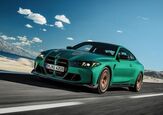

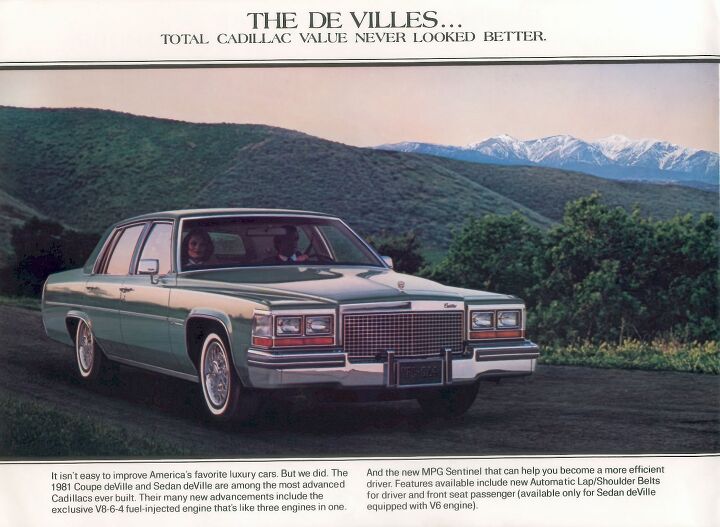

















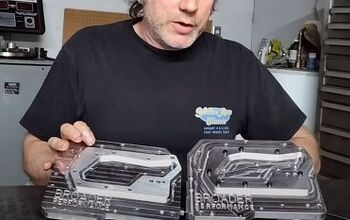
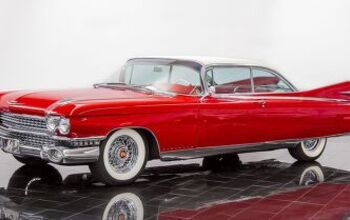
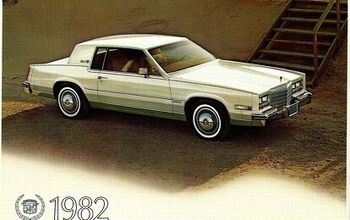





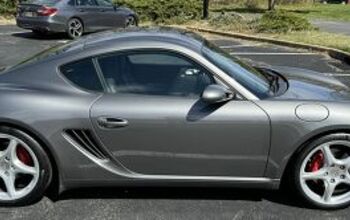
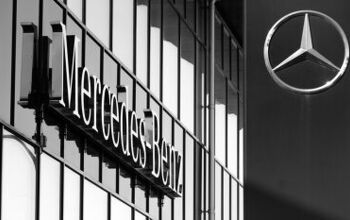


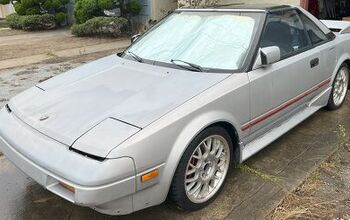
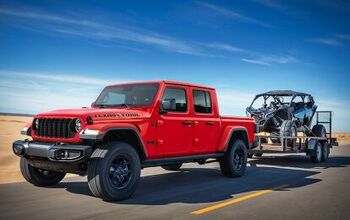

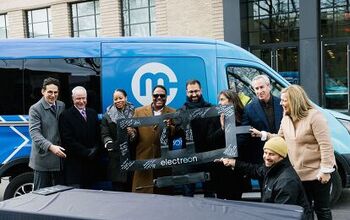
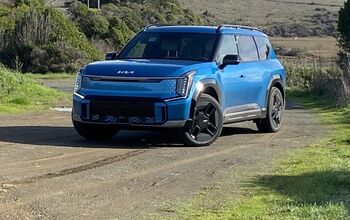
Comments
Join the conversation
I was 30 and came upon a used 5k coupe de ville in 1982, triple white and had to have it. I lived in NYC and drove it aggressively, amusing my friends by backing off the gas just a bit around 40 mph and you didn't need the sentinel, everyone could feel the rumble of the 6 cylinder mode. When you got on the highway it went from 8 to 4 and could keep to 70 or more on 4 cylinders all day. I minded all the vacuum hoses, inspected all those relays regularly and generally had a good time. Nobody else had a Cadillac in my crowd, and thanks to a good 8 track and ice cold a/c, it was a hit. I certainly wasn't their target customer and made the car use every bit of the programming in the passenger footwell computer. I actually enjoyed it and kept it for 6 years, till a burst power steering hose led to an engine fire. I moved on to the HT4100 and it was OK but we missed the cylinder drama haha! Maybe because I read all the instructions and had a lead foot, it worked the way the copywriters said. Tellingly, Dad didn't like this car, so I figure perhaps I was the only one (LOL) who might have used the thing the way the engineers envisioned. Driving the 400 miles to Buffalo NY it could get 20 mpg on a good day. So there, one guy liked the engine, go figure!
Resurrecting a dead thread, but I have never found the knack for using the fuel efficiency monitors to improve overall economy. When the number listed is just one big blur, it doesn't strike me as useful. I'm curious how well the various cylinder deactivation schemes currently available work long term. My brother has the 1.5 three cylinder EcoBoost that can kill a cylinder under the right conditions, I briefly had a Mazda3 that killed 2 cylinders under the right circumstances and my mom has a CX-5 that does the same thing. I remember summer disquiet years ago when Honda released the VCM V6, but that's no longer in use and I haven't heard anything more about it.